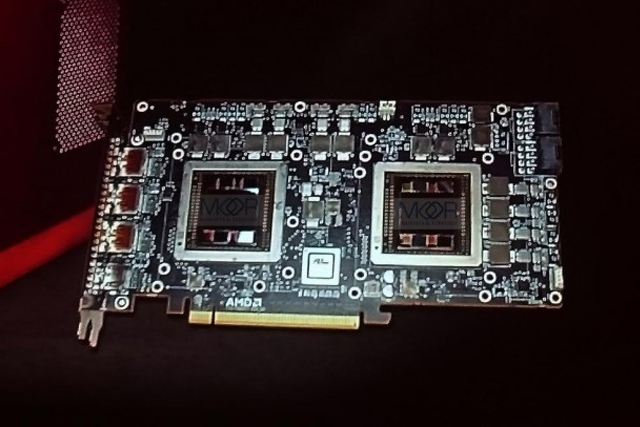
Shown off powering an HTC Vive Pre headset at VRLA, the world’s largest dedicated VR expo, the dual-core AMD GPU should be the most powerful single PCB board in the world when it is eventually released. It will also come in way above the recommended specifications for the Oculus Rift CV1, which requires a GTX 970 or R9 290, but the highest-of high-ends is always more than you’ll need, so that’s no surprise.
What is impressive is how compact it is. The Fury X2, as it’s called by the likes of PCPer, was fitted inside Falcon Northwest’s Tiki PC, a system that famously advertises itself as being no broader than a glass of wine.
Prototype Tiki from @FalconNW powering #htcvive with dual Fiji @AMDRadeon at the #vrlapic.twitter.com/2gCxgzucB5
— Antal Tungler (@coloredrocks) January 23, 2016
While impressive in its own right, the card’s placement at VRLA shows how committed AMD is to virtual reality. It’s placed a priority on having Radeon powered “Oculus Ready” systems available to order, and has taken great pains to explain the advantages of its Liquid VR software platform.
When the Fury X2 card does eventually land, it will likely be ungodly expensive, reserved for a select few high-end gamers and enthusiasts. Its launch window may restrict its adoption as well, as the next-generation Pascal GPUs from Nvidia, and AMD’s own Polaris architecture are said to not be far behind, perhaps launching as soon as summer this year.
That doesn’t leave a lot of time for the dual core Fiji XT card to shine.




